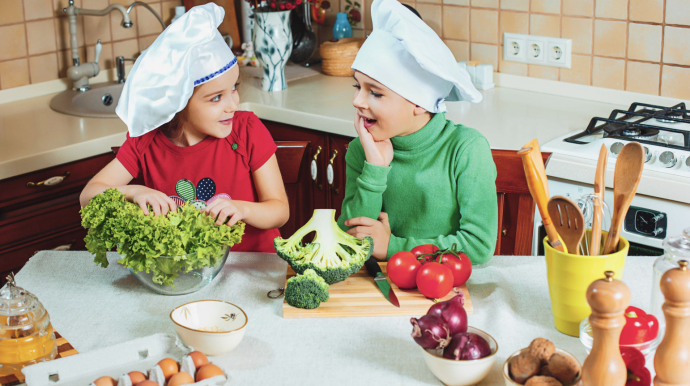7 Cooking Tips

Discover 7 different ideas and tips to make your cooking time a little bit more pleasant!
When it comes to cooking, daily hacks and simple solutions are amazing because they make our lives easier, save time, and minimize effort.
Stand-in cookbook stand
Put your large salad bowl to an unconventional use as a cookbook stand. Simply prop the open book against the side of the overturned bowl. Unlike a flat countertop, the bowl elevates the book at an angle for easy reference during cooking.
Recipe roundup
Try this solution for keeping recipes at eye level while cooking: use a magnet to secure recipe cards to the metal hood above your stove. Not only are they near the stove but you can arrange several cards in a row for easy reference when you’re preparing a complete meal. If you don’t have a metal hood, try propping a baking sheet or cookie sheet against the wall and hanging the recipe on it with binder clips. (if your baking sheet is magnetic, you can use magnets to attach the recipes.) The baking sheet takes up almost no room when leaning against the wall which frees up space, and your recipe is safer from drips than it would be on the counter.
Book lock
Cooking from cookbooks in a small kitchen can be an issue—with limited counter space, books are often in the way and can get dirty, or worse, ruined by oil, molasses, honey, ketchup, etc. In addition, pages in a stiff book often flip on their own so it’s all too easy to lose your place in the middle of a recipe. To solve these problems, set the opened cookbook in a rimmed baking sheet and stretch two rubber bands across the pages on either side, along the edges of the book (this also works great with magazines). Then you can lean the book against a wall for easy, out-of-the-way, protected reading, and the pages won’t flip on you.
Training tomorrow’s cooks
Accurately reading a recipe is key to success in the kitchen, and this is a great lesson to teach young aspiring chefs and bakers. To help children as they learn, print out the recipe you’re working on together and place it inside a clear sheet protector. As you use each ingredient and complete each step, they can cross it off with a dry-erase marker. This is also good for cooks who might have more experience in the kitchen but still want to double-check that they haven’t skipped anything in a complex recipe.
Showing your work
Rather than converting ingredient proportions every time you halve or double a favorite recipe, try this tip: calculate the new measurements just once and list them in the same order as the ingredients in the recipe on a narrow slip of paper or a post-it note. Clip or stick the paper with the new measurements next to the original measurement column in the recipe; no more strained memory or guesswork.
Temperature cheat sheet
If you can never remember the target doneness temperatures for various cuts of meat and poultry, desserts, and bread, try attaching a laminated index card featuring the desired internal temperatures for the foods you make most to your thermometer’s protective case. That way you can avoid second-guessing yourself or scrambling for a reference book when you’re in the middle of cooking.
Handy instructions in bulk
Many thrifty cooks save money by purchasing staple ingredients in bulk. Here’s a tip for making it easier to prepare these foods: when you transfer the bulk-purchased foods, such as rice, polenta, or pancake mix, into storage containers, write instructions for preparing that food on a mailing label and stick it to the container. Then when you go to make rice for dinner, the instructions are right there.
